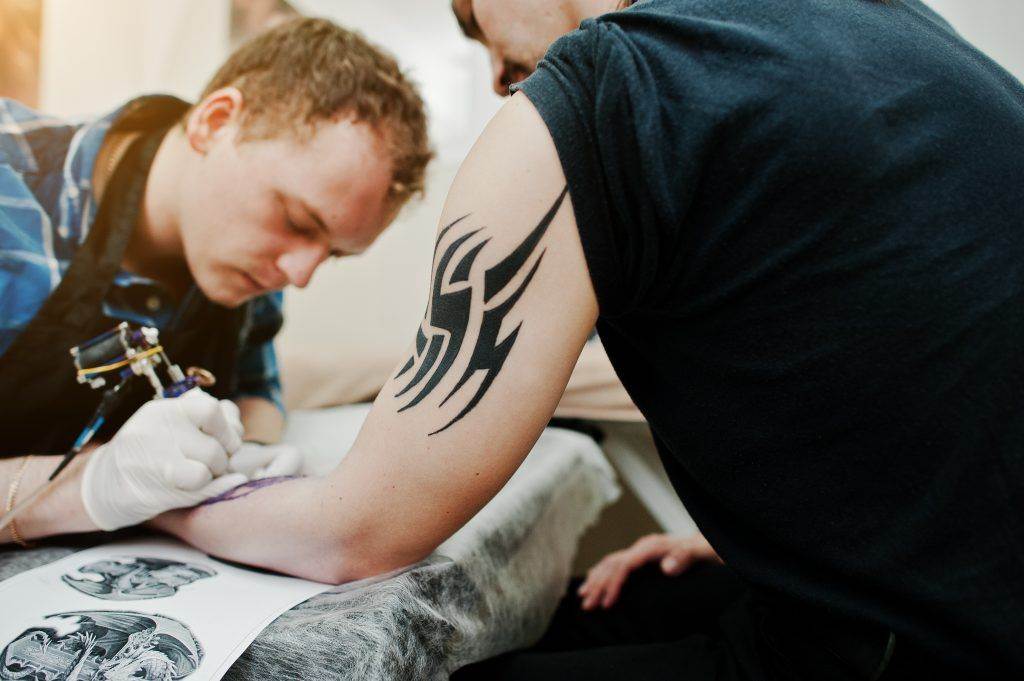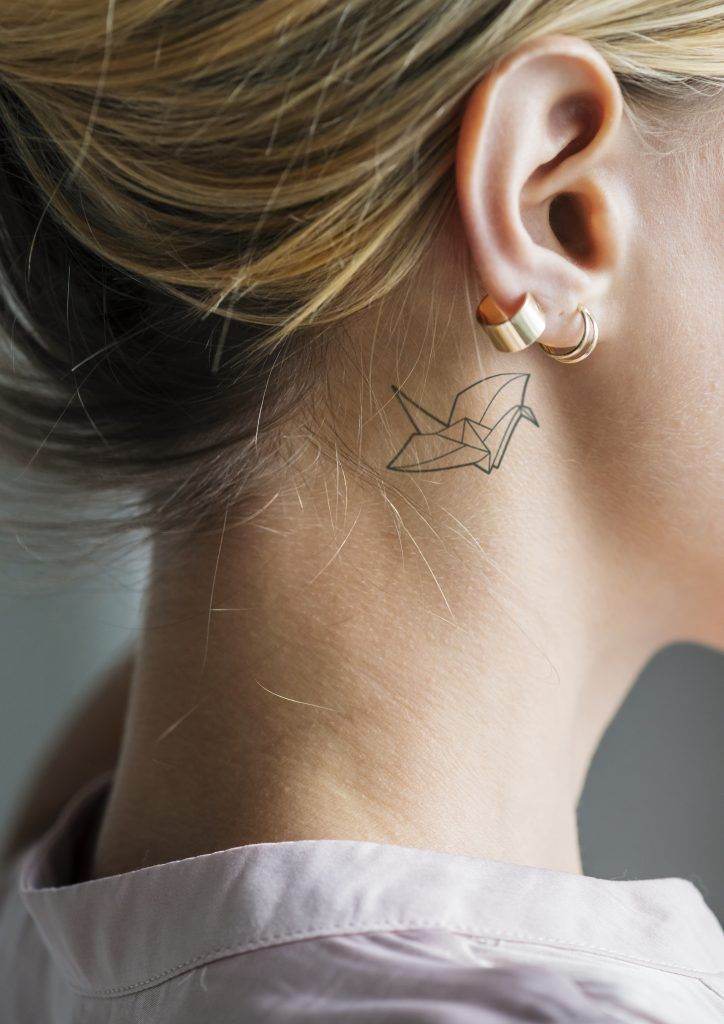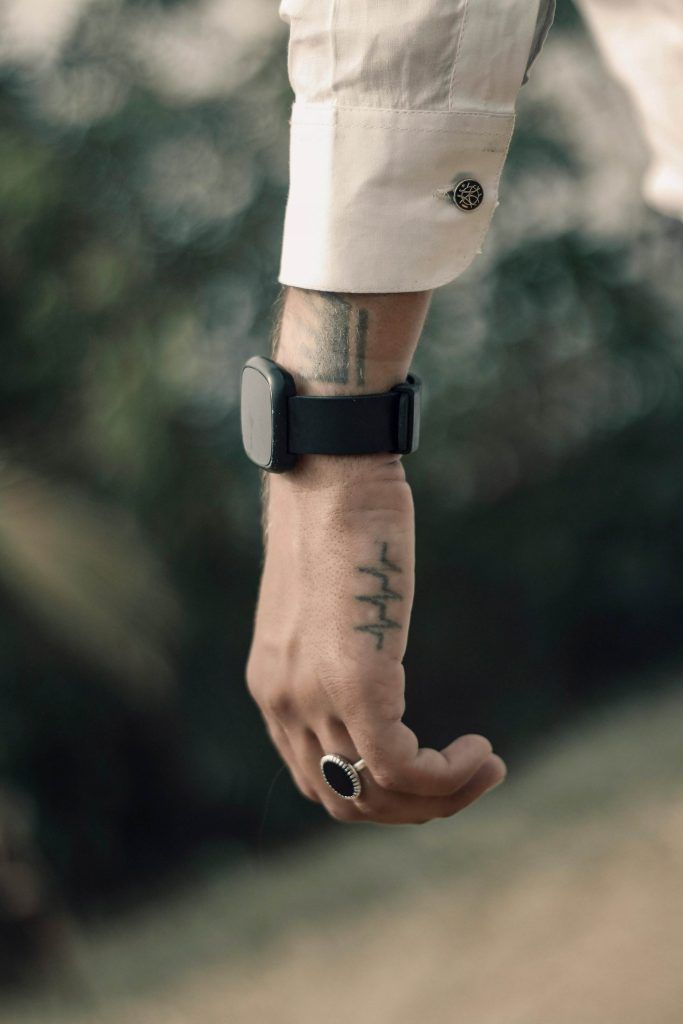Introduction
Importance of Choosing the Right Placement
Choosing the right placement for a tattoo is a pivotal aspect that can significantly influence the overall experience. The location of a tattoo can dictate not just the visibility but also the level of pain, personal significance, and even how the tattoo may evolve with age. For instance, a tattoo on the wrist offers high visibility, making it an excellent choice for someone looking to express their personality or adhere to a trend. Conversely, a tattoo on the back may be less visible, ideal for those preferring to keep their ink private or for professional reasons. Ultimately, the decision should reflect both personal style and the lifestyle of the individual. A thoughtful approach to tattoo placement can ensure that the design resonates on a deeper level.

Factors to Consider Before Getting a Tattoo
Before committing to ink, it’s essential to consider several key factors:
- Pain Tolerance: Different areas of the body have varying sensitivity levels. Locations such as the ribs or spine may be more painful compared to places like the upper arm.
- Visibility: Think about whether you’d prefer your tattoo visible to others or if you’d like it to be a personal expression.
- Future Considerations: As life evolves, so do personal preferences. Consider how the tattoo may fit into your life in the long term, including career implications or changes in lifestyle.
- Design Size and Complexity: Larger, intricate designs may require more space, limiting placement options.
- Cultural Significance: Some placements carry traditional meanings in various cultures, which may add an extra layer of significance to your tattoo choice.
Taking the time to reflect on these factors can lead to a rewarding tattoo experience that aligns with one’s vision and lifestyle.
Most Popular Tattoo Placement Areas
Back and Spine
When it comes to popular tattoo placement areas, the back and spine undeniably top the list. This expansive canvas allows for intricate designs, making it a favorite for those who want to showcase detailed artwork or large pieces.
- Design Versatility: The back is perfect for complex tattoos, such as landscapes, quotes, or mythical creatures. Intricate designs can unfold beautifully across this broad area, allowing for stunning visual storytelling.
- Personal Preference: Many opt for this placement to keep their tattoos discreet, revealing them only at specific times or occasions. This is particularly appealing to professionals who may prefer to hide their ink.
- Pain Factor: While the back can be a less painful area due to muscle and fat, the spine does contain nerve endings, which can result in varying pain levels, especially for tattoos that run along the vertebrae.
Wrist and Forearm
On the other end of the spectrum, the wrist and forearm are incredibly popular for those looking for visible yet easily concealed tattoos. This placement offers a unique blend of visibility and personal significance.
- Quick Glances: Tattoos on the wrist or forearm can be seen at a moment’s notice, making them ideal for expressions of identity, quotes, or symbols that hold personal meaning.
- Minimal Pain: Compared to other areas, these placements typically result in less discomfort, making it a more appealing option for first-time tattoo recipients.
- Trend Appeal: The wrist and forearm have become trendy for minimalist designs or small symbols, fitted perfectly with today’s contemporary tattoo culture.
Ultimately, both the back and spine as well as the wrist and forearm provide distinct advantages and cater to varying approaches to self-expression through tattoos. Each choice should resonate with the wearer’s personality and lifestyle.
Unique Tattoo Placement Ideas
Ribcage
For those seeking a distinctive canvas, the ribcage is a unique tattoo placement that offers both beauty and intrigue. This area is ideal for individuals who are looking to make a statement while maintaining an air of personal intimacy.
- Elegance and Size: The ribcage provides ample space for elongated designs like script or floral motifs that can flow seamlessly with the curves of the body.
- Symbolism and Meaning: Many choose the ribcage for tattoos that have significant meanings, such as quotes or images that resonate deeply on a personal level. It’s a location that feels almost sacred, as it’s closely tied to the heart and soul.
- Pain Considerations: While some may find the ribcage area to be quite painful due to the proximity to bones and nerves, the resulting artwork often feels worth the discomfort.
In fact, the ribcage can be a stunning and empowering placement, symbolizing strength and personal history.
Behind the Ear
Another unique placement worth considering is behind the ear. This area offers a subtle yet striking location that pairs well with small yet meaningful designs.
- Discreet Yet Expressive: Tattoos behind the ear can be easily hidden or revealed, allowing for a flexible approach to visibility. This makes them ideal for symbols, initials, or small figures that can represent something special.
- Popularity Among Minimalists: This placement is favored by those who prefer minimalistic tattoos, such as tiny stars, hearts, or geometric shapes, adding a touch of personality without overwhelming the area.
- Pain Level: Generally, the pain level here tends to be moderate as the skin is softer compared to other spots. This makes it an appealing choice for individuals hesitant about more painful areas.
In summary, both the ribcage and behind the ear offer unique tattoo placement options that can elevate personal expression while catering to distinct tastes. These choices allow individuals to carry their art in ways that are both eye-catching and deeply personal.

Least Painful Tattoo Placement Areas
Upper Arm
When it comes to finding a comfortable spot for your tattoo, the upper arm often stands out as one of the least painful areas. This placement is not only popular for its lower pain level but also for its versatility in design.
- Muscular Cushion: The upper arm has a good amount of muscle and fat, which helps cushion the needle’s impact during the tattooing process. This makes it a more bearable option for those who are concerned about pain.
- Plenty of Space: With a larger area to work with, the upper arm can accommodate a variety of designs, from intricate sleeve tattoos to smaller, impactful pieces. It’s perfect for those looking to tell a story with their ink.
- Concealability: If you prefer to keep your tattoos under wraps, the upper arm is easily covered with clothing, offering discretion when needed.
Between the physical comfort and the creative possibilities, the upper arm is an excellent choice for many tattoo enthusiasts.
Thigh
Another prime spot for a less painful tattoo experience is the thigh. This area provides a unique blend of comfort, surface area, and accessibility.
- Ample Padding: Much like the upper arm, the thigh is fleshy and muscular, which results in a generally lower pain threshold compared to bonier areas like the foot or wrist.
- Great for Large Designs: The thigh offers a substantial canvas for larger pieces, making it an ideal spot for intricate artwork or detailed designs that require more space.
- Discreet Placement: Tattoos on the thigh can easily be hidden under pants, giving you the freedom to show off or cover up your art depending on the situation.
Overall, both the upper arm and thigh stand out as accommodating choices for individuals who want to minimize discomfort while maintaining artistic freedom. By selecting these locations, tattoo seekers can enjoy their journey into ink with confidence and style.
Considerations for Covering Up Tattoos
Neck and Collarbone
When choosing where to place a tattoo, the neck and collarbone stand out as popular but often vulnerable locations. If the time comes to consider covering them up, several factors should be taken into account.
- Visibility and Professionalism: Tattoos on the neck and collarbone are highly visible, which can represent a challenge in professional environments. If you anticipate changes in your career, a covering up strategy might be necessary to ensure your tattoos align with professional expectations.
- Design Options: When looking to cover these tattoos, it’s crucial to think about the design. Opting for larger pieces, such as floral designs or abstract patterns, can help effectively mask the original ink while creating a new, cohesive piece.
- Consultation with Professionals: Engaging with experienced tattoo artists can also help navigate the best approach to the cover-up, ensuring that the final artwork suits your current aesthetic and preferences.
Finger and Hand
Similarly, tattoos located on the fingers and hands may require consideration for future cover-up options. This area, while trendy and fashionable, presents its own set of challenges.
- Job Considerations: Many individuals working in specific industries may find that hand tattoos hinder their job opportunities. If you foresee a need for a more conservative appearance, having a cover-up plan in mind can be beneficial.
- Design Complexity: Covering tattoos in these areas can be intricate due to the smaller canvas. Simple designs or even solid colors can often work well for an effective cover-up, salvaging the existing ink while allowing you to redefine your style.
- Aesthetic Cohesion: Choosing designs that complement existing tattoos or harmonize with the overall visual concept is crucial. This ensures that the new tattoo feels like an integrated part of your overall look rather than merely a patch.
In both the neck and collarbone, as well as the fingers and hands, thoughtful consideration and professional advice can lead to successful cover-ups, enabling individuals to adapt their body art to suit their evolving personal and professional lives.


Stylish and Trendy Tattoo Placement Areas
Ankle
When it comes to stylish and trendy tattoo placements, the ankle has secured its position as a fashionable option that appeals to many. This placement is particularly popular for smaller designs, offering both elegance and subtlety.
- Versatile Design Options: The ankle is an excellent spot for minimalist tattoos like symbols, delicate florals, or even small quotes. This versatility allows for a personal touch that can reflect individual style.
- Visibility Control: An ankle tattoo can easily be shown off in summer sandals or covered with shoes in more conservative settings, making it a flexible choice for all occasions. This adaptability is appealing for many, especially in professional environments.
- Pain Level: Generally, the ankle is considered to be moderately painful due to its proximity to bone and the thinness of the skin, but many find the pain manageable, especially for smaller tattoos.
Side Abdomen
Moving to another trendy area, the side abdomen presents unique opportunities for larger and more intricate designs. This placement is perfect for those looking to make a statement with their tattoos.
- Canvas for Creativity: The side abdomen offers a larger, more expansive canvas for detailed artwork, allowing for stunning designs like mandalas, elaborate quotes, or nature scenes that can wrap around the body.
- Sensual Appeal: Tattoos in the side abdomen area often evoke a sense of intimacy and allure, making them popular among individuals looking to express their personality in a more private manner.
- Pain Considerations: While tattooing along the ribs can be slightly more painful, the unique beauty of the side abdomen’s designs often outweighs the discomfort for many.
In summary, both the ankle and side abdomen offer stylish placements that cater to a range of tastes and preferences. Whether opting for a discreet ankle tattoo or a bold design on the side abdomen, individuals can embrace their individuality while embracing the latest tattoo trends.
Impact of Tattoo Placement on Design
Chest and Sternum
The placement of a tattoo can have a profound impact on both the design and the way it is perceived. When considering tattoos on the chest and sternum, several unique factors come into play.
- Expansive Canvas: The chest provides a larger surface area for intricate designs, allowing for expansive artwork that can incorporate bold colors and detailed elements. Popular choices include mandalas, quote wraps, or nature scenes that take full advantage of the space.
- Symmetry and Balance: Designs on the sternum can create a stunning symmetry that enhances the aesthetic appeal. Many choose to extend tattoos from the chest onto the shoulders or down toward the abdomen, creating a cohesive look that flows with the body’s natural lines.
- Pain Consideration: It is worth noting that the chest and sternum can be sensitive areas to tattoo—especially along the sternum itself—as they are close to bone and contain many nerve endings. Choosing a design that complements the curvature of the body can help mitigate some of this discomfort.
Leg and Calf
On the other hand, tattoos on the leg and calf offer an entirely different set of opportunities and considerations.
- Versatile Size Options: The leg provides ample space for both small and large designs. From minimalist ankle tattoos to larger thigh pieces, the leg can accommodate a wide variety of styles and themes.
- Flow and Movement: Additionally, tattoos on the calf or thigh can take advantage of the leg’s natural movement, allowing designs to appear dynamic and expressive. Themes depicting nature, animals, or abstract shapes often look visually striking as people walk.
- Discreet Yet Bold: Another advantage of leg tattoos is that they can be easily hidden under clothing or revealed in casual settings, providing flexibility according to the occasion.
In summary, both the chest and sternum as well as the leg and calf provide unique opportunities for tattoo design that can significantly impact the final result. Understanding how placement influences design allows individuals to choose art that not only reflects their personality but also fits harmoniously with their bodies.
Cultural and Symbolic Significance of Tattoo Placement
Finger and Knuckle
The finger and knuckle tattoos carry a distinct cultural and symbolic significance that resonates deeply with many individuals. This placement has been embraced in various cultures, often signaling personal beliefs or commitments.
- Everyday Visibility: Tattoos on the fingers and knuckles are inherently visible, making them powerful statements of identity. In many cases, individuals opt for small symbols, initials, or meaningful quotes that reflect core values or relationships, serving as constant reminders of what they hold dear.
- Cultural Heritage: In some Indigenous cultures, tattoos on the hands symbolize a rite of passage or mark significant life changes. This historical significance often instills a sense of pride and connection to one’s heritage for those who choose similar placements today.
- Minimalist Aesthetic: The trend of minimalist tattoos has found a niche in finger and knuckle placements, appealing to those who want ink that is stylish yet understated. These tiny designs often convey deep meanings without overwhelming visual impact.
Shoulder and Clavicle
Moving up to the shoulder and clavicle area, this placement also teems with cultural and symbolic significance, making it a popular choice for expansive and intricate designs.
- Expression of Strength: Tattoos placed on the shoulder and clavicle can symbolize strength and resilience. Many athletes or individuals talking about personal growth choose this area to emphasize their journey and perseverance, as it holds a strong connection to the upper body’s power.
- Artistic Flow: The curvature of the shoulder and collarbone serves as a natural canvas for flowing designs, such as mandalas, wings, or meaningful quotes. This placement allows for creative freedom, encouraging artists and wearers alike to craft pieces that resonate with personal stories.
- Cultural Symbolism: In various cultures, shoulder tattoos may signify protection or guidance. For example, some tribal cultures use shoulder tattoos to depict lineage or accomplishments, creating a visual narrative that ties the wearer to their heritage.
In summary, both finger and knuckle tattoos and shoulder and clavicle placements offer rich cultural meanings and personal significance. Whether one seeks to declare their identity or embody strength, understanding the cultural context of these placements can enhance the overall experience of the tattoo journey.
